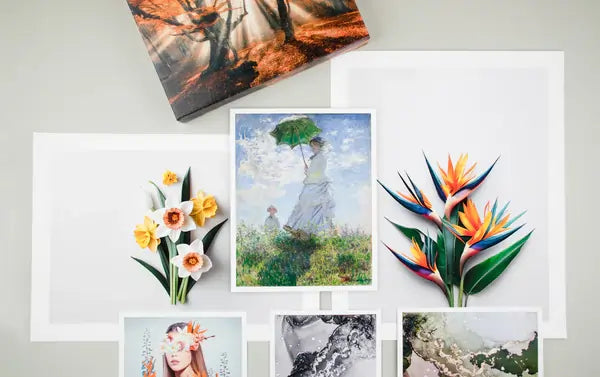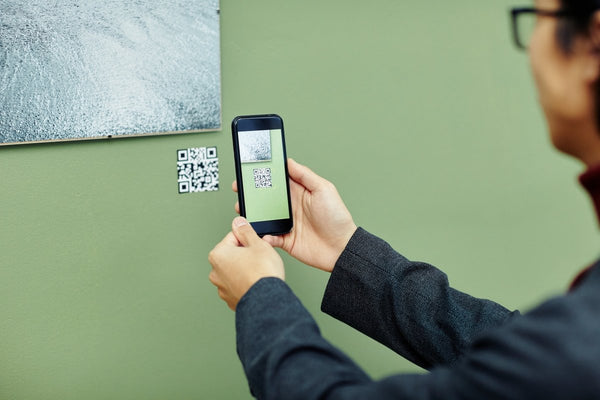Guide to Using QR Codes in Museums and Art Galleries
Modern art lovers are increasingly asking for new and innovative ways to interact with old and new works alike. This has led to a sharp rise in “immersive” or interactive experiences that allow guests to engage more deeply with art through a variety of sensory experiences.
If you’re a museum or art gallery director who wants to help visitors engage with the works on display in more depth, one of the most accessible tools at your disposal is QR code-triggered experiences. These codes are popping up around art galleries worldwide as a way to offer guests everything from expanded information on a piece to opening up entire augmented reality worlds that allow them to see the art in an entirely new way.
What are QR codes?
QR codes are a type of barcode that can be scanned with a smartphone camera. They can be printed on any flat surface, from brochures to signs, or even painted directly into art!
How do QR codes work?
QR codes contain an array of pixels in a unique pattern that encodes a certain amount of data. Unlike a barcode, which requires a laser scanner to read the code, QR codes can be read by readily available smartphone cameras.
When someone points their smartphone camera at a QR code, the phone will link to the content contained in the code.
How Can You Use QR Codes in Art for Interactive Experiences?
Because QR codes can contain links to an incredible amount of data, the opportunities to use QR codes to create interactive experiences with artwork are nearly limitless. Continue reading for some of our favorite ways to incorporate QR codes into an art space.

In-Depth Information on the Artwork and Artist
We all love a minimal layout in a gallery without too many signs and other information cluttering walls and distracting from the artwork, but what about the art lovers who want to know more? Adding a QR code next to the basic information about the piece can allow patrons to scan it and open in-depth artist bios and other information about the piece on their phone.
An initiative called Bridge Bharat has taken this idea and used it to empower Indian artists working in traditional Indian art mediums. Aakanksha Singh, an art collector and art enthusiast, realized that many Indian artists struggled with anonymity once their artwork left their studios. She decided to create a digital passport system that contained in-depth information about each artist and their artwork and helped trace the artwork throughout its lifetime. All of this information is linked to a QR code on the artwork, helping Indian artists maintain a connection to their work no matter how often it is bought and sold.
Audio Tours
By creating a QR code audio tour, you can expand accessibility AND provide a more immersive experience. Guests can scan a code at each stop to access audio information about the piece or exhibit. This can cut down on the costs of providing audio devices to patrons who prefer an audio tour and expand your overall accessibility to guests who may be vision-impaired.
Maps and Other Guest Information
QR codes are also a great way to provide guests with basic information about your facility, including interactive maps with directions to specific rooms or exhibits. This can help you reduce the waste of paper maps and allow guests to self-serve more information about the environment without needing to find a member of the staff.
Purchase Information
For commercial galleries, QR codes can contain quick links to purchase information for interested patrons, allowing the buying process to be more “self-service.” You can create a custom purchase form that collects all the information you’ll need from a buyer, as well as links to process payment for the piece right there on the spot.
Augmented Reality Experiences
This is one of the most exciting uses for QR codes, which we see more frequently in modern art experiences. Augmented reality experiences use a person’s smartphone camera to place objects in the space around them as if they’re peeking into a new reality that can’t be seen with the naked eye. This can be digital sculptures or other objects created by the artist exhibiting the physical pieces in the gallery or include things like pop-up information about each work that hovers around the objects as patrons navigate the gallery.
One of our favorite examples of fun augmented reality experiences through QR codes is when LA artist Robert Vargas painted a mural of Los Angeles Dodgers player Shohei Ohtani on the side of a building in Little Tokyo. A QR code was painted at the bottom of the mural, which, when scanned, made the mural come to life through the user’s camera, showing Shohei Ohtani taking a big swing of his bat and tossing a fastball.
The possibilities for augmented reality are endless and will continue to expand as the technology becomes more sophisticated. Linking your exhibit to an augmented reality experience via QR code is a great option if you’re looking to create a really memorable and unique experience for your guests.
Ready to Create Gallery-Ready Prints of Your Artwork? We’re Here to Help!
At the Stackhouse, we’re experts in helping artists translate their works into gallery-ready prints that will last a lifetime. We can answer all your questions about scanning, printing, and more. Contact us here for more information about how we can help you create print products that make your artwork shine!






Leave a Comment